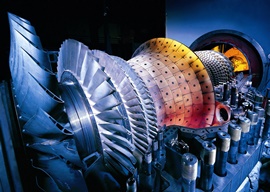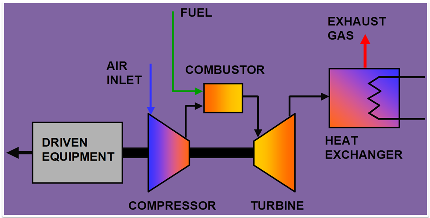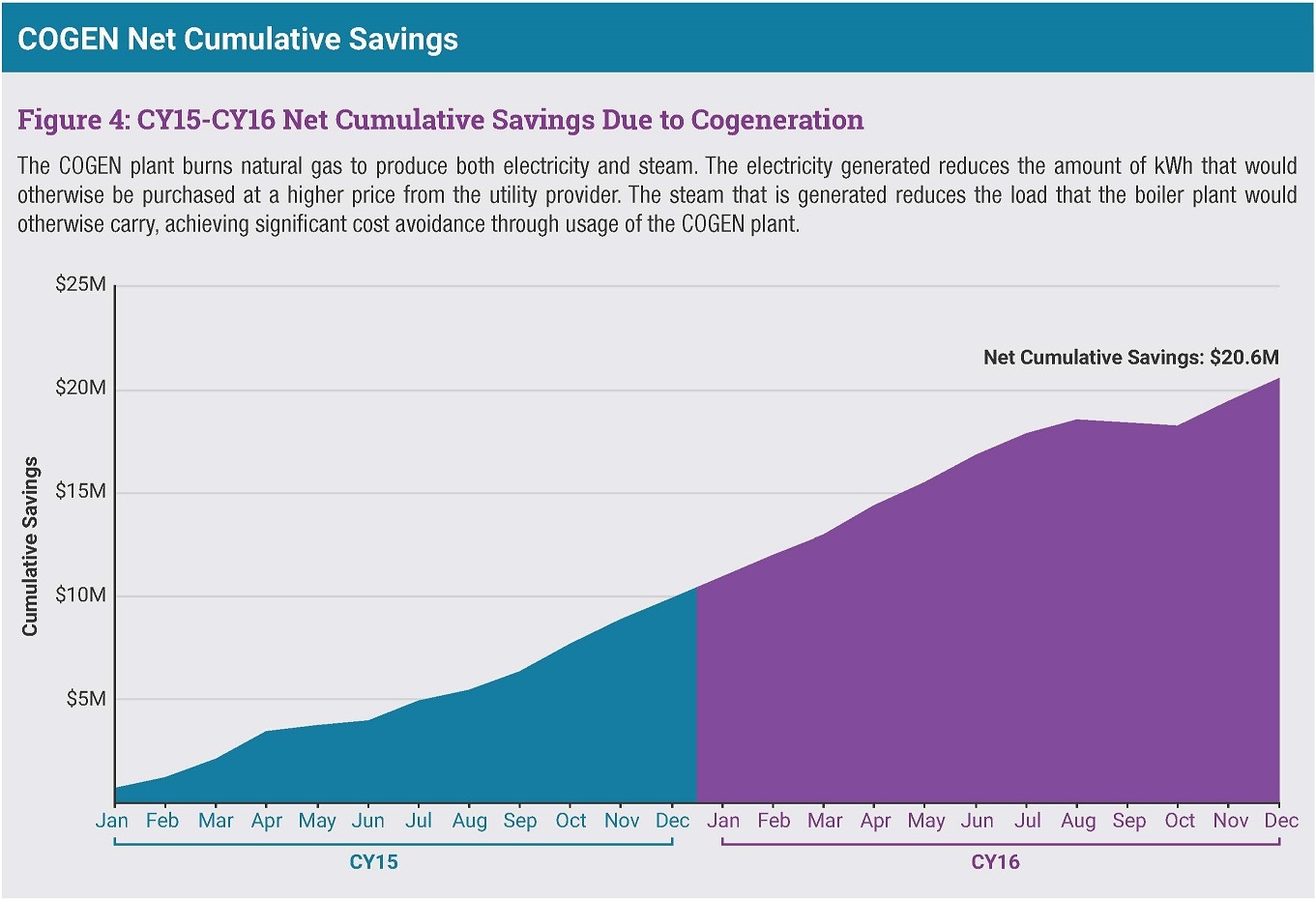
Developing and enforcing national and international standards that ensure high quality facilities
Cogeneration
Page Content

|
COGEN Plant
What is Cogeneration?
Cogeneration (COGEN), also called combined heat and power (CHP), is the process whereby a single fuel source, such as natural gas, is used to produce both electrical and thermal energy. An onsite cogeneration system is more efficient than a utility-operated central power plant because thermal energy that would otherwise be wasted is captured for use at the onsite facility.
The NIH has one of the largest U.S. government cogeneration plants; it is also one of the cleanest cogeneration system in the world. The COGEN plant meets National Ambient Air Quality Standards more effectively and economically than through the use of traditional boiler systems. |
|
Picture of the inside of a Cogen Turbine 
|
The NIH COGEN plant has been in operation since July 2004. Housed at the plant is a 23 mega watt (MW) combustion ABB GT10 jet engine that was built in Sweden. It was selected because it produces less than half the nitrogen oxide (NOx) of other commercial turbines. The NIH COGEN plant has a waste heat-recovery steam generator (HRSG) that produces ~ 100,000 pounds of steam per hour. The combustor burns highly compressed natural gas at around 3,000°Fahrenheit (F) and generates a turbine speed of about 7,700 revolutions per minute. About 30% of the energy generated is converted to electricity, and 55% is converted to steam, which is generated in a boiler at a temperature of ~ 300°F. The remaining energy, which doesn’t exceed 15% of the total generated, is dispersed as waste through a unique stack rising above the plant.
COGEN provides ~ 40% of the NIH’s average annual steam load. It produces enough power for 18,000 homes or two of the engines of a fully loaded 400-ton Boeing 747 during cruising altitude. Cogeneration saves the NIH an estimated $5 million/yr. in steam and electricity costs. The cogeneration energy savings is equivalent to the energy used by ~ 5,000 households in a year. The NIH COGEN reduces carbon dioxide (CO2; a greenhouse gas) emissions by ~ 58,000 ton/yr. It is one of the cleanest cogeneration plant ever built in the world, generating 44% less emission than the state-of-the-art cogeneration plant built in 2012. That is equivalent to the emissions from 10,000 cars.
|
Cogeneration Concept 

|
This page was last updated on Oct 29, 2024